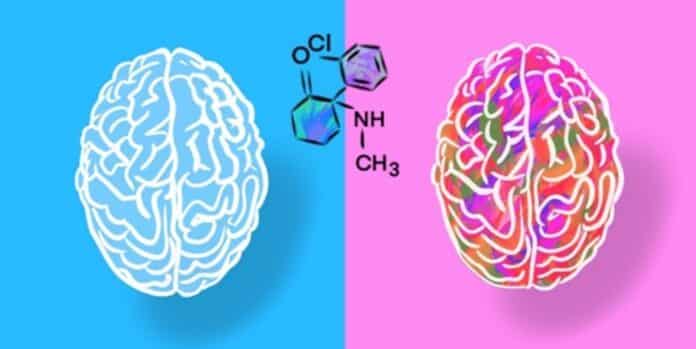Ketamine is a drug used for depression and pain instead of addictive opioids. Some studies show it works like opioids in the brain. However, new research from Stanford Medicine suggests this might differ for males and females.
In a study with rats, blocking opioid receptors in the brain stopped ketamine’s effects, but only in male rats. Female rats still reacted to ketamine as before.
Raag Airan, MD, PhD, assistant professor of radiology, referring to receptors in the brain that bind to opioids, said, “The main thing we’re interested in is whether there is a functional interaction between ketamine and the opioid system.”
The researcher, Airan, said that “ketamine is a strange drug, and we should be careful about using it for many different conditions. Ketamine blocks certain receptors in the brain, but its effects are different from other drugs that do the same thing. A study in 2018 found that ketamine’s antidepressant effects could be stopped by another drug that blocks opioid receptors, causing disagreement among experts.”
Airan’s lab wanted to understand this better, so they repeated the study in rats to see what was happening in the brain.
Airan’s team didn’t plan to study sex differences at first. They tested one group of rats with a drug called naltrexone, which seemed to stop ketamine’s effects on depression and reward areas in the brain. But when they repeated the test with another group of rats, naltrexone didn’t work. They realized the first group was all male, and the second was all female.
This surprised them, as they saw a clear difference between males and females. They designed a trial where male and female rats received different drug combinations to understand this. They used a new functional ultrasound imaging technique to see how the drugs affected the brain.
In male rats, naltrexone stopped ketamine’s effects in brain areas linked to depression and reward. However, in female rats, naltrexone didn’t significantly affect ketamine’s actions in the brain.
Female rats seem to feel the effects of ketamine still even when given the opioid blocker. The researchers think this happens because their brains grow more opioid receptors to compensate. When they looked at the brains of rats treated with the blocker, they found that females had more opioid receptors than males. This might be because testosterone in male rats stops their brains from growing more opioid receptors.
The team plans to do more studies to understand this better. For example, they want to see what happens if they give male rats estrogen or female rats testosterone.
Airan suggests that not considering sex differences may have led to inconsistent findings regarding how ketamine interacts with the opioid system. Many studies on ketamine haven’t focused on sex as a factor. Even in experiments with animals, male animals are often used more than females. Additionally, most ketamine studies with people don’t have enough participants to determine if there are significant differences between the sexes.
Airan emphasizes the need for clinical trials to account for biological factors like sex and actively investigate them. It’s not enough to assume everything will work the same for everyone.
The study by Stanford Medicine researchers reveals that the response to ketamine is influenced by opioid pathways in the brain, with significant differences observed between males and females.
These findings highlights the importance of considering sex as a variable in ketamine research and clinical practice, ultimately contributing to more personalized and effective treatment strategies for depression and pain management.
Journal reference:
- Di Ianni, T., Ewbank, S.N., Levinstein, M.R. et al. Sex dependence of opioid-mediated responses to subanesthetic ketamine in rats. Nature Communications. DOI:10.1038/s41467-024-45157-7.
